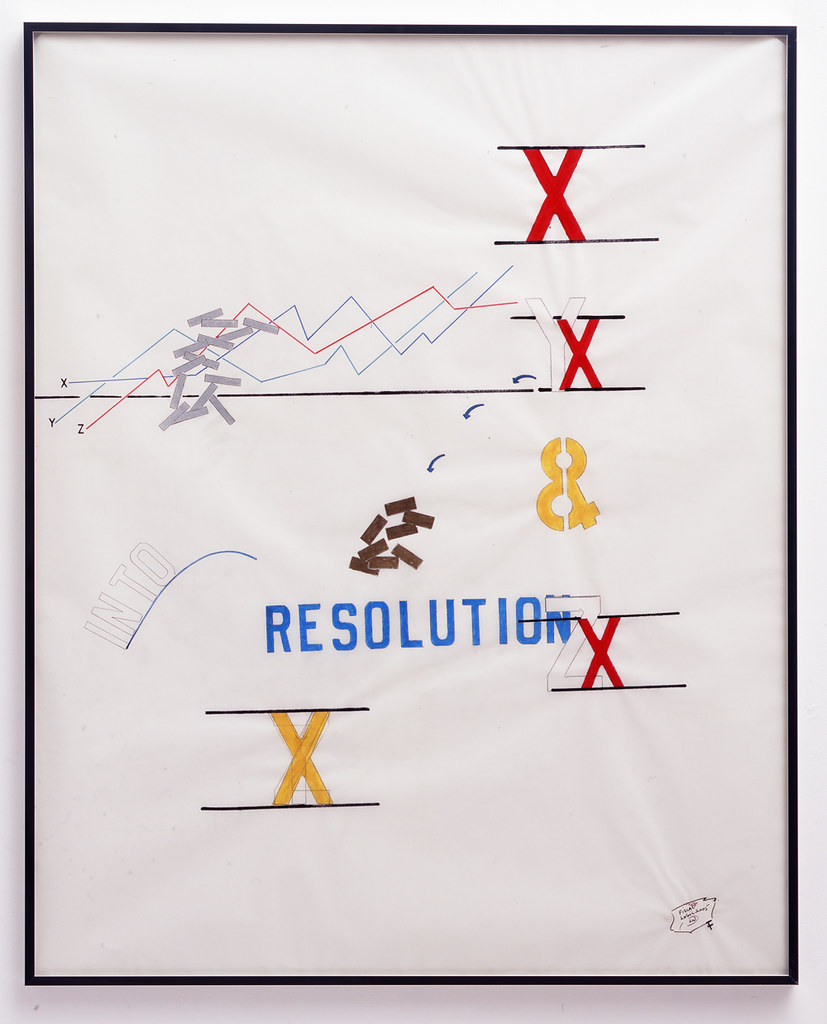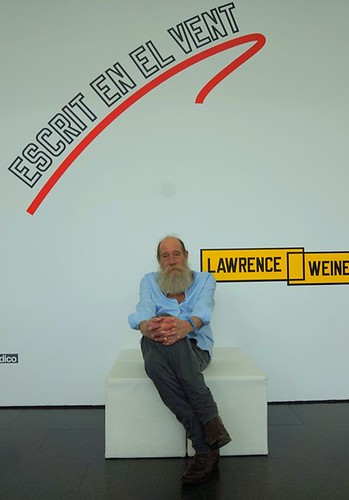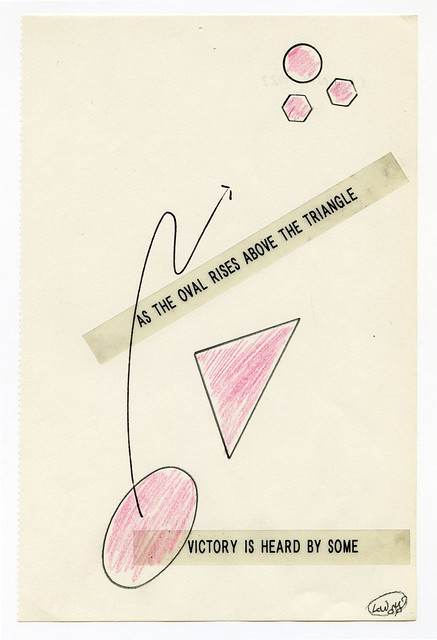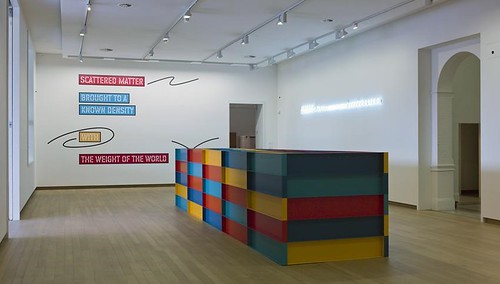Friday, 11:00am
6 December 2013
On the water, off the wall
Lawrence Weiner’s typographic and gestural drawings fill the lower gallery of Amsterdam’s Stedelijk Museum

‘Written on the Wind’ (Op de Wind Geschreven) is an exhibition at Amsterdam’s Stedelijk Museum of more than 300 works on paper by the conceptual artist Lawrence Weiner, alongside short films, notebooks and gestural markings in the work and on the walls, writes Sarah Snaith.
Known for his typographic, language-based ‘sculptures’, the drawings permit a glimpse of Weiner’s thought processes and their development over time. They are deemed sculptural for two reasons, first, the work is one material added to another – pencil, ink, paint on paper – and second, the seemingly simple outcomes are representative of a sculptural process that is distilled into a succinct, yet often oblique body of text with philosophical undertones.
This is humorously highlighted in a piece reading, ‘Take the Bagel from Hegel & See Where it Rolls’. When Weiner feels limited by the constraints of language, he replaces words with gestural markings intended to be understandable to everyone, regardless of their spoken language.
Photograph of Lawrence Weiner at ‘Written on the Wind’ (Op de Wind Geschreven), 2013. Photo: Martijn van Nieuwenhuyzen.
Top: Lawrence Weiner, Untitled (Financial Drawing [Resolved]), 2005. Courtesy of the artists and Lisson Gallery, London. Photo: Dave Morgan.

Lawrence Weiner, Untitled (Oval Over the Triangle [Victory]), 1999. Private Collection.

In a forum discussion, Weiner said, ‘[I am] only intrigued in making work about things I do not understand … when a thought becomes tangible you can draw it’. Philosophy and contemplative studies of space and time are visible throughout, as well as drawings that focus on ideas of place, navigation and the scientific tendency to reevaluate ‘truths’. The nautical references seen throughout show his connection to the city of Amsterdam – where he moors a house boat / studio. ‘Maybe [my work] is just notating a map, drawing while travelling, drawing in hotels … Time is a very complicated arrangement’.
Lawrence Weiner, Untitled (Financial Drawing [into Resolution]), 2005. Courtesy of the artists and Lisson Gallery, London. Photo: Dave Morgan.
![Untitled (FINANCIAL DRAWING [RESOLVED])_original_resize](http://farm6.staticflickr.com/5548/11115808105_36ab294cf7.jpg)
Lawrence Weiner, Untitled (Oval Over the Triangle [Triumph]), 1999. Private Collection. Photography: Courtesy of Moved Pictures Archive, NYC.
![untitled (OVAL OVER THE TRIANGLE [VICTORY])_original_resize](http://farm6.staticflickr.com/5476/11115853946_3435de3379_z.jpg)
The 50-year survey is ‘a drawing made out of drawings’, said curator Soledad Gutiérrez of the Museu d’Art Contemporani de Barcelona (MACBA), where the exhibition was held earlier this year. The space and hanging of the work has been shaped by Weiner, who designed the wall divisions, which appear to be a physical manifestation of an untitled work from 1986 that reads ‘mi casa es su casa’ (my house is your house). None of the works is accompanied by a description of any kind and their year of creation is only made visible by the signature. This is a feature that Weiner insists upon, believing that his work is negatively influenced by text, which alters the audience’s viewing: ‘It’s art, you don’t have to tell them how to see it,’ he said in the Stedelijk forum. ‘The making of art, the making of music, is inherent to human beings … Art is not educational, it is sensual.’
‘Written on the Wind’ continues at the Stedelijk until 5 January 2014, and can be enjoyed alongside Weiner’s works in the museum’s permanent collection: What is Set Upon the Table Sits on the Table (1962-63) and Scattered matter // Brought to a known density // with // The Weight of the World // Cusped (2007) installed in the entrance hall, as well as An object made to resemble another by the Addition of a Sufficient Quantity of External Qualities (1988) on the building’s exterior, and the reinstalled Escalated from Time to Time // Overloaded from Time to Time // Revoked from Time to Time (originally produced in 1985), in the museum café.
Lawrence Weiner in Stedelijk Museum, Amsterdam, 2013.
Lawrence Weiner sculpture and Bruce Nauman neon on the walls, with Donald Judd sculpture in the foreground. Installation photograph by Gert-Jan van Rooij.

Sarah Snaith, design writer, editor, London
Eye is the world’s most beautiful and collectable graphic design journal, published quarterly for professional designers, students and anyone interested in critical, informed writing about graphic design and visual culture. It is available from all good design bookshops and online at the Eye shop, where you can buy subscriptions and single issues.
